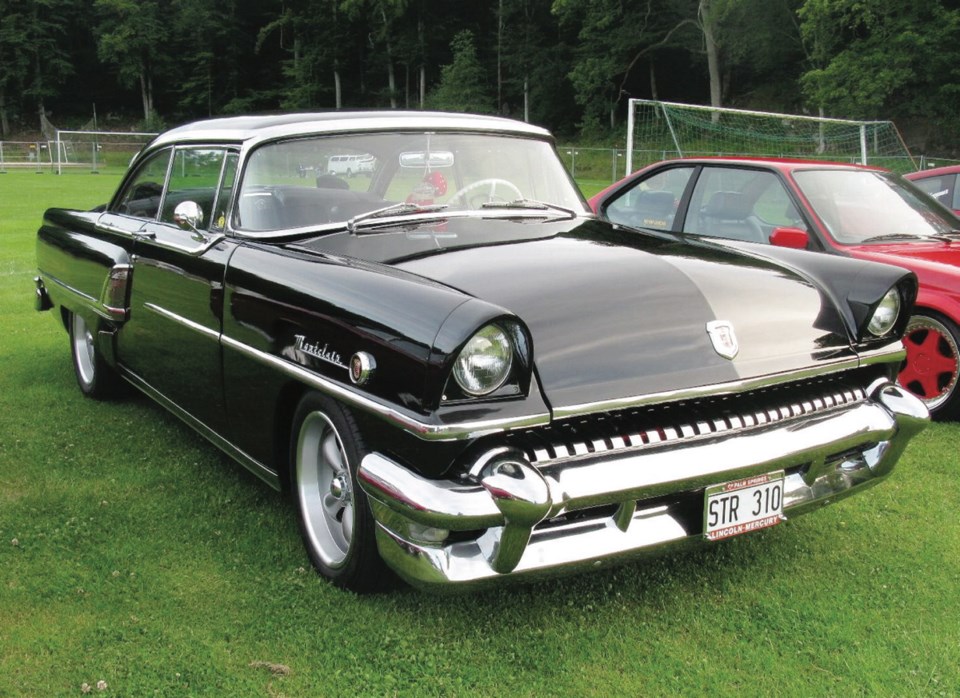The only model the Ford Motor Co. made from 1908 to 1922 was its famous Model T. It then acquired financially troubled Lincoln Motor Co., but even with that addition, by the 1930s, Ford realized it needed to further broaden its offerings to bridge the gap between the popular-priced Ford and luxury Lincoln.
Its first move came in 1936 with the introduction of the more affordable Lincoln Zephyr, still with a V-12 engine like the big Lincolns, only smaller. Then in 1939, it added the Mercury to expand its offerings even more to compete with cars like GM’s Oldsmobile and Buick and Chrysler’s Dodge and DeSoto.
The Mercury was essentially a deluxe Ford, and it would take a decade to break out of that mould. Ford Motor Co. started the process of pulling Mercury away from Ford in 1946 when it created the Lincoln-Mercury Division. Then in 1949, Mercury really started evolving its own persona by sharing its body with the small Lincoln.
This was the start it needed to come to full blossom by the mid-1950s. That’s when Mercury began taking on even more of a Lincoln like-image.
Although Lincoln and Mercury were corporate siblings, there was a twist in the early 1950s when they began establishing reputations at opposite ends of the automotive spectrum: Lincoln in racing and Mercury in fuel economy.
Lincolns really broke out by ruling the big-car class in the famous Carrera PanAmericana, popularly known as the Mexican Road Race, by sweeping the first four places for stock cars in 1952 and ’53 and the first two in ’54.
Meanwhile, Mercury was specializing in fuel sipping, winning the Mobilgas Economy Run in 1950 and ’52. But it had proved adept at racing, too, when a 1948 Mercury coupe bought off a used-car lot finished fourth in the 1951 Mexican race. And Mercury won four 1955 NASCAR events.
By the mid-1950s, the upmarket move of popular-priced cars included Mercury, which by mid-decade was virtually what the Lincoln had been a few years earlier.
The impressive 1955 Mercury was advertised as “big, bold and beautiful,” and took many of its styling cues from the “Mexican Lincolns.” The wheelbase was stretched 89 millimetres to 3,922 mm, 89 mm more than Ford’s, although the station wagon stayed at 2,997. And at 5,240 mm, it was almost 203 mm longer than the Ford.
A dominant 1955 Mercury styling feature was a massive grille comprised of two big chrome bumpers connected by vertical bars and sturdy looking bumper guards. It also had the corporation’s first wraparound windshield. These features and hooded headlamps gave the front end a substantial, luxurious appearance.
Generous side chrome spears and stretched fenders extending to large vertical taillamps further contributed to the rugged styling.
Mercurys were powered by the corporate overhead-valve V-8 introduced a year earlier. For 1955, it was enlarged from 4.2 to 4.8 litres (256 to 292 cu. in.) and produced 188 horsepower with manual transmission and 198 with automatic.
A three-speed manual was standard, with overdrive or “Merc-O-Matic” optional. Merc-O-Matic was standard in the top-of-the-line Montclair.
The automatic transmission was now modified to start in low gear if the driver floored the accelerator; previously it had started in second, à la Mercedes-Benz. Drag racers no longer had to shift manually from Low to Drive in stoplight contests.
Mercury offered a full line of bodies for 1955, including an eight-passenger station wagon and convertible in three series — Custom, Monterey and Montclair. Extensive power equipment was optional, even air conditioning for the first time.
But A/C systems in the early days were cumbersome units with the evaporator in the trunk and clear plastic tubes carrying cool air into the cabin. Few were sold.
The Mercury’s performance was competitive. Tom McCahill of Mechanix Illustrated tested a Montclair with the 198-horsepower engine and automatic and reported zero to 100 km/h in 12.8 seconds and top speed of 174 km/h.
As was Tom’s inclination then, he complained that no manual transmission was available with the top rated engine, estimating it could have cut the zero-to-100 time to 11 seconds.
In a boom year in which the North American auto industry sold eight million cars, Mercury sold almost 330,000, up from the 259,305 in 1954 and a record for Ford’s “in-between” car.
A lot of buyers liked the idea of a “poor man’s Lincoln.” McCahill called the 1956 “Big M” Mercury “a mink coat at a muskrat price,” a description that could apply equally well to the very similar 1955 model.



